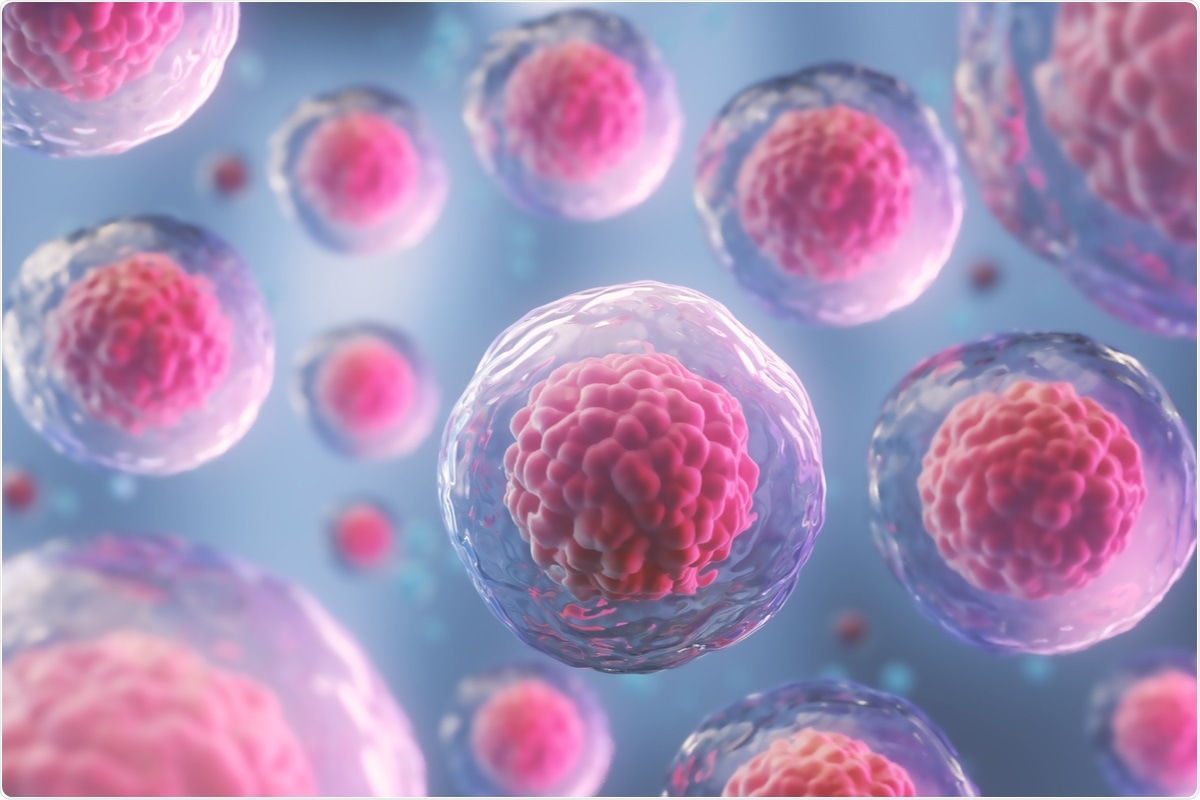Muscle regeneration takes place through a complex mechanism that involves different steps and relies on stem cells.
 Image Credit: Anusorn Nakdee/Shutterstock.com
Image Credit: Anusorn Nakdee/Shutterstock.comRecent research headed by scientists from the Instituto de Medicina Molecular João Lobo Antunes (iMM; Portugal) and the University Pompeu Fabra (UPF Barcelona; Spain) elaborates a novel process for muscle regeneration after physiological damage depending on the rearrangement of nuclei.
This protective process paves the way to a better understanding of muscle repair in physiology and disease. The research was published in the scientific journal Science.
The organ responsible for locomotion, skeletal muscle tissue, develops from cells that have more than one nucleus, an exceptional feature in the human body. In spite of the plasticity of muscle cells, their contraction can be followed by muscle damage.
Even in physiological conditions, regeneration is vital for muscle to endure the mechanical stress of contraction, which often leads to cellular damage.”
William Roman, Study Main Author and Researcher, Instituto De Medicina Molecular
William Roman is also a researcher at the UPF, Barcelona.
Even though muscle regeneration is analyzed intensively in the past years, the researchers concentrated on processes involving other cells, including muscle stem cells, which are needed for extensive muscle damage.
In this study we found an alternative mechanism of regeneration that is muscle cell autonomous.”
Pura Muñoz-Cánoves, Study Lead Author and Group Leader, University Pompeu Fabra
Scientists employed various in vitro models of injury and models of exercise in mice and humans to notice that when an injury occurs, nuclei are attracted to the damage site, speeding up the repair of the contractile units. The researchers as a further step dissected the molecular mechanism of this observation.
William Roman adds, “Our experiments with muscle cells in the laboratory showed that the movement of nuclei to injury sites resulted in local delivery of mRNA molecules. These mRNA molecules are translated into proteins at the site of injury to act as building blocks for muscle repair.”
Pura Muñoz-Cánoves states thus on the significance of these discoveries, “This finding constitutes an important advance in the understanding of muscle biology, in physiology and muscle dysfunction.”
Along with effects for muscle research, the current research also brings in more general concepts for cell biology, like the nuclear movement to injury sites.
One of the most fascinating things in these cells is the movement during development of their nuclei, the biggest organelles inside the cell, but the reasons why nuclei move are largely unknown. Now, we showed a functional relevance for this phenomenon in adulthood during cellular repair and regeneration.”
Edgar R. Gomes, Group Leader, Instituto de Medicina Molecular
Edgar R. Gomes is also the Professor at Faculdade de Medicina da Universidade de Lisboa and co-led the research.
Source:
Journal reference:
Roman, W., et al. (2021) Muscle repair after physiological damage relies on nuclear migration for cellular reconstruction. Science. doi.org/10.1126/science.abe5620.